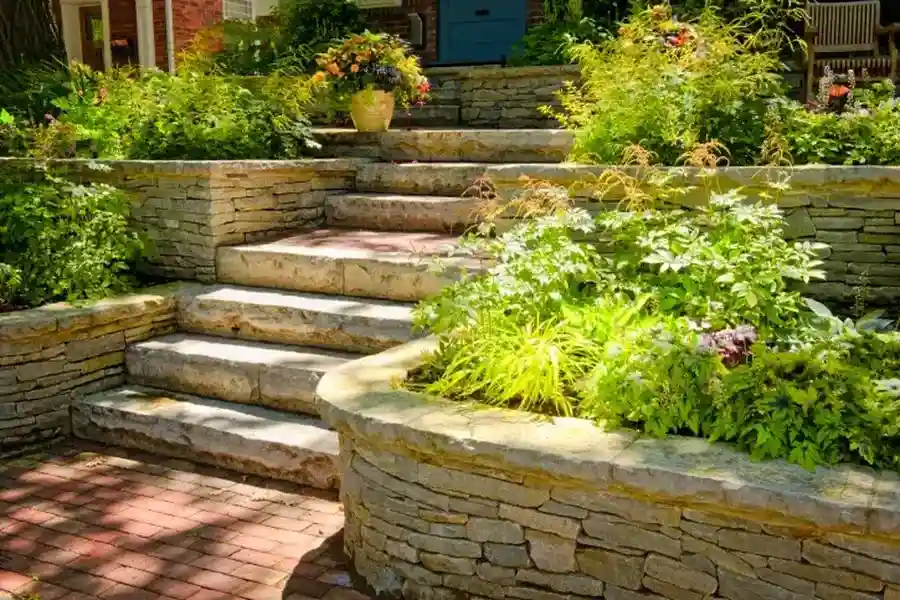Understanding the Importance of Retaining Walls in Landscape Management
Retaining walls are essential structures in landscaping, especially for managing sloped terrains. These walls help prevent soil erosion and manage water drainage. They also provide aesthetic appeal, creating distinct outdoor spaces. By understanding how retaining walls function, you can appreciate their role in both residential and commercial landscapes. When installed correctly, they offer stability to uneven ground, allowing for safer, more functional areas.
Primary Benefits of Using Retaining Walls
There are several benefits to using retaining walls in landscaping. Firstly, they help prevent soil erosion by holding back soil that would otherwise slide or wash away. Secondly, these walls improve water drainage, ensuring that rainwater is directed away from buildings and important areas. Lastly, retaining walls add a visual element to gardens and yards, creating defined spaces and improving overall aesthetics.
Common Challenges With Sloped Landscapes
Sloped landscapes pose unique challenges that retaining walls can address. Without proper management, soil erosion can lead to unstable ground and loss of valuable land. Water accumulation can also become an issue, causing damage to property and making areas unusable. Additionally, steep slopes limit usable space, reducing the functionality of outdoor areas.
Implementing Effective Retaining Wall Installation
An effective retaining wall installation requires careful planning and execution. First, assess the landscape to determine the best location and design for the wall. Consider factors such as soil type, slope angle, and drainage needs. Next, choose materials that fit the environment and desired look. Options include stone, brick, or concrete blocks. Finally, ensure professional installation to guarantee durability and effectiveness.
Materials Selection for Retaining Walls
Choosing the right materials for your retaining wall is crucial. Popular options include natural stone, concrete blocks, and bricks. Each material has its advantages. For example, natural stone offers an organic look but may require more maintenance. Concrete blocks provide strength and variety in color and texture. Bricks offer a classic appearance with ease of installation.
Steps for Building a Retaining Wall
- Plan the layout considering the terrain.
- Prepare the site by clearing debris and leveling the ground.
- Laying the base layer with gravel for drainage.
- Stack chosen materials ensuring stability.
- Add reinforcement like metal bars if necessary.
- Backfill with gravel to promote drainage.
- Finish by capping the top with stones or bricks for a polished look.
Cost Considerations for Retaining Wall Projects
The cost of installing a retaining wall varies based on several factors. Material choice is significant; natural stone tends to be more expensive than concrete blocks. Labor costs depend on complexity and size of the project. It’s important to consider long-term maintenance expenses as well. Investing in quality materials and professional construction can save money over time by reducing repairs and replacements.
Long-Term Maintenance Tips for Retaining Walls
Maintaining a retaining wall ensures its longevity and effectiveness. Regular inspection for cracks or movement helps catch issues early. Cleaning debris from drainage systems prevents blockage and water buildup. Seasonal checks allow prompt repair before minor problems escalate. Consider hiring professionals periodically to evaluate structural integrity.
Contact Us for Quality Landscaping Solutions
If you’re looking to enhance your property with retaining walls, our team at Vega Irrigation Services LLC is here to assist you. Located in Grand Prairie, TX, we have years of experience providing top-notch landscaping solutions tailored to your needs. Call us today at (972) 896-8062 to learn more about how we can transform your sloped landscapes into beautiful, functional spaces.

